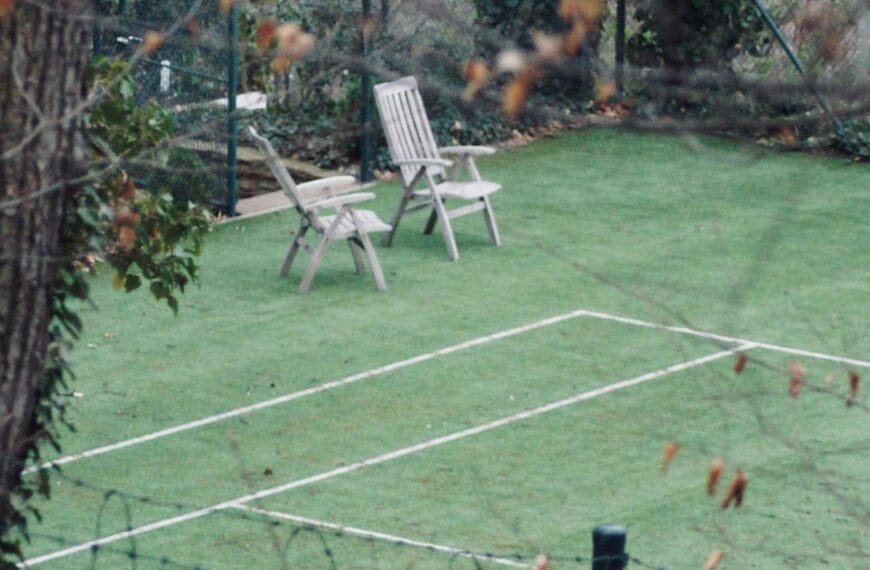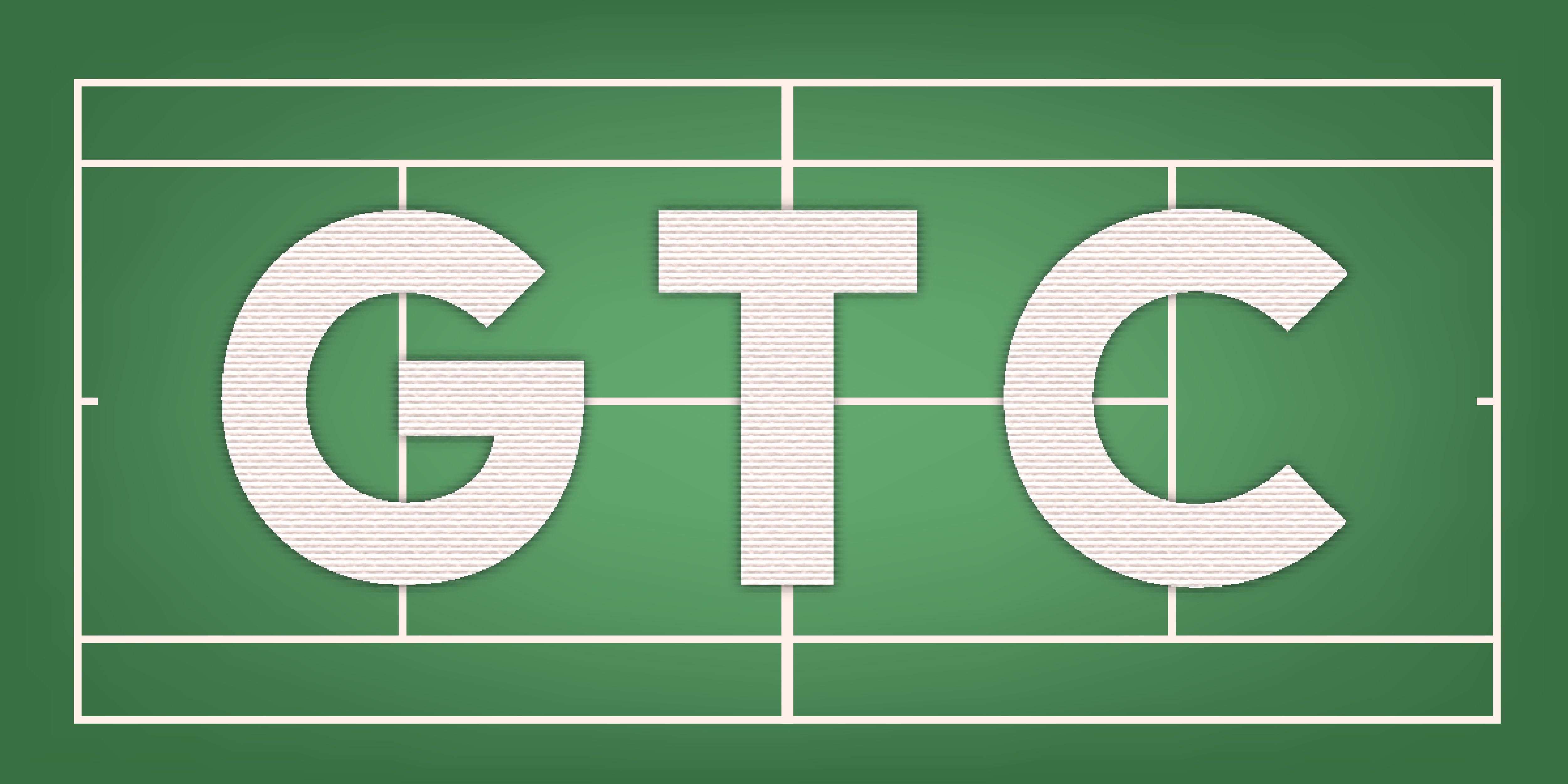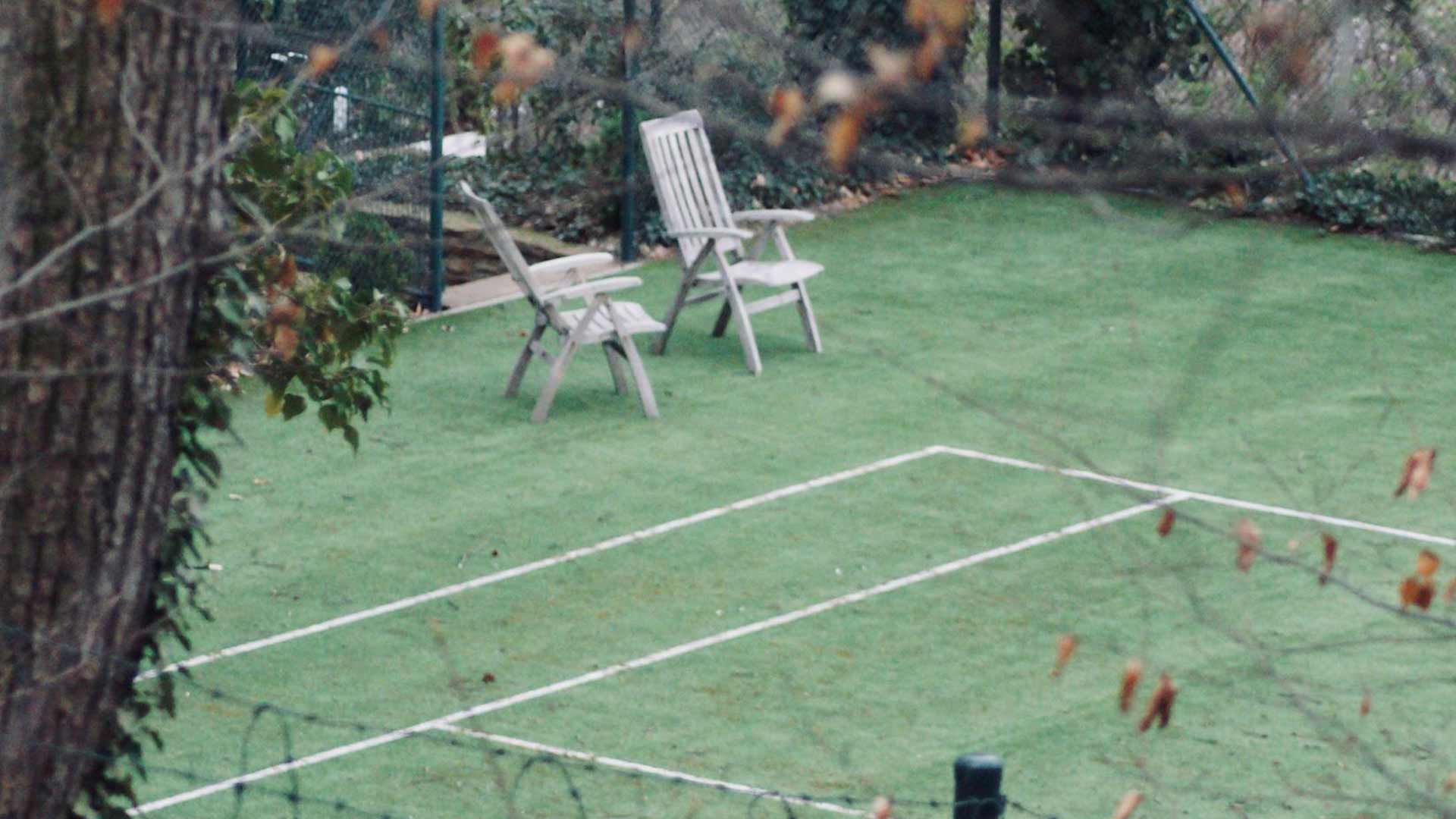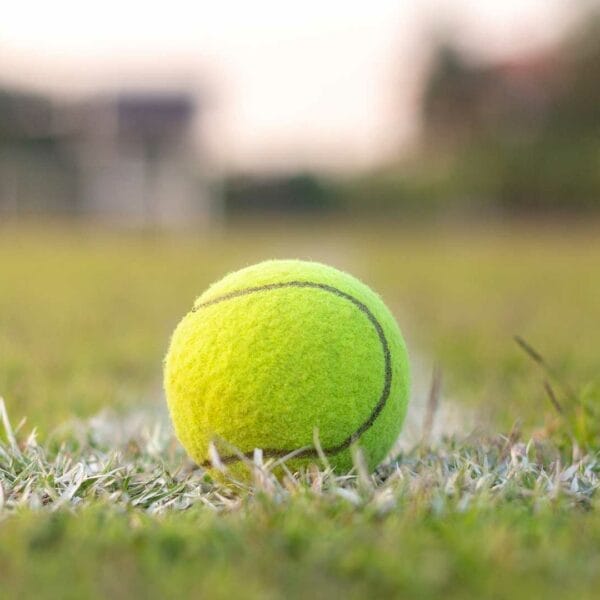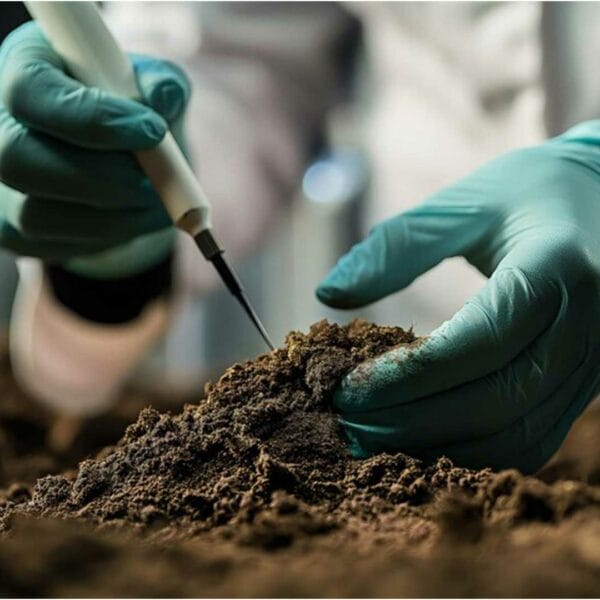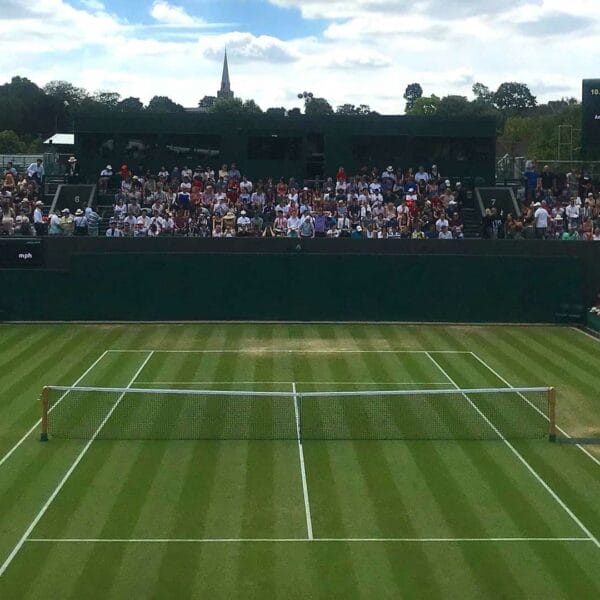Recycled Materials in Grass Tennis Court Construction
Introduction to Recycled Materials in Tennis Court Construction
The world of sports infrastructure is gradually shifting towards eco-friendly practices, and tennis courts are no exception. The traditional methods of constructing grass tennis courts have been criticized for their environmental impact, leading to an increased focus on sustainable alternatives. One such approach involves incorporating recycled materials into the construction process.
Historically, tennis courts were built using virgin materials such as sand, soil, and turf. However, these materials contribute significantly to greenhouse gas emissions during extraction, processing, and transportation. In contrast, recycled materials offer a more environmentally conscious option by reducing waste, conserving natural resources, and minimizing carbon footprints.
The use of recycled materials in tennis court construction has gained momentum globally, driven by growing concerns over climate change and environmental degradation. Government regulations and initiatives promoting eco-friendly practices in various industries, including sports infrastructure development., also influence this shift towards sustainability
As the demand for sustainable tennis courts continues to rise, manufacturers and contractors are exploring innovative ways to integrate recycled materials into their products and services. From crushed glass and rubber mulch to reclaimed wood and plastic waste, a wide range of recyclable materials can be used in tennis court construction.
By embracing this sustainable approach, tennis clubs, schools, and municipalities can create environmentally responsible facilities that reduce their ecological footprint and serve as role models for the community. As we delve deeper into the benefits, types, and applications of recycled materials in grass tennis court construction, it becomes clear that this trend is here to stay.
Benefits of Using Recycled Materials in Grass Tennis Courts
The incorporation of recycled materials in grass tennis court construction offers numerous advantages, making it an attractive option for sports infrastructure developers. Some of the key benefits of using recycled materials in grass tennis courts include:
Reduced Carbon Footprint
By utilizing recycled materials, the need for extracting, processing, and transporting virgin materials is minimized, resulting in lower greenhouse gas emissions and a reduced carbon footprint.
Conservation of Natural Resources
Recycling helps conserve natural resources by reusing materials that would otherwise end up in landfills or oceans. This approach reduces the pressure on finite resources and promotes sustainable development.
Cost-Effective Solution
While initial costs may be higher due to the sourcing and processing of recycled materials, long-term savings can be achieved through reduced maintenance requirements and extended lifespan of the tennis court.
Improved Durability
Recycled materials often exhibit improved durability compared to their virgin counterparts, requiring less frequent repairs and replacements. This leads to cost savings and minimizes downtime for tennis clubs and facilities.
Enhanced Sustainability
Sports infrastructure developers demonstrate their commitment to environmental responsibility and contribute to a more sustainable future by choosing recycled materials.
Increased Resilience to Weather Conditions
Recycled materials can better withstand extreme weather conditions, such as heavy rainfall or intense sunlight, ensuring the longevity of the tennis court.
Innovative Design Opportunities
The use of recycled materials opens up new design possibilities, allowing architects and designers to create unique and visually appealing tennis courts that showcase their commitment to sustainability.
By leveraging these benefits, sports infrastructure developers can create environmentally responsible, cost-effective grass tennis courts that meet players’ needs while minimizing their ecological footprint.
Types of Recyclable Materials Used in Grass Tennis Court Construction
The types of recyclable materials used in grass tennis court construction vary widely, depending on the specific application and desired outcome. Some common examples of recyclable materials used in grass tennis court construction include:
Crumb Rubber: Similar to recycled rubber, crumb rubber is made from shredded tyres and may be used as a base layer
Organic Materials: Organic materials such as coconut coir, rice husk ash, and bamboo fibres are being increasingly used in tennis court construction due to their eco-friendly properties and ability to improve drainage and reduce maintenance requirements.
Geotextiles: Geotextiles made from recycled polyester or nylon stabilise the soil beneath grass tennis courts, preventing erosion and improving drainage.
These recyclable materials offer a range of benefits, including reduced waste, lower carbon emissions, and increased durability. By incorporating these materials into grass tennis court construction, developers can create sustainable and environmentally friendly sports infrastructure that meets players’ needs.
Environmental Impact of Traditional Tennis Court Construction Methods
The construction of traditional tennis courts has a significant environmental impact, primarily due to the use of non-renewable resources and energy-intensive manufacturing processes. The production of virgin materials such as asphalt, concrete, and steel requires large amounts of fossil fuels, resulting in greenhouse gas emissions and contributing to climate change.
One of the primary concerns associated with traditional tennis court construction methods is the extraction and processing of raw materials. For example, mining limestone and granite for aggregate production can lead to deforestation, habitat destruction, and water pollution. Additionally, the transportation of these materials can increase air pollution and carbon emissions.
Another significant environmental concern is the disposal of waste generated during traditional tennis court construction. The demolition of existing courts and the removal of debris can lead to landfill waste, which contributes to methane production and further exacerbates climate change.
Furthermore, grass tennis court surfaces require frequent maintenance, which involves applying fertilisers and preservatives. These substances can contaminate soil and groundwater, posing risks to local ecosystems and human health.
In contrast, using recycled materials in tennis court construction offers a more sustainable alternative. It reduces waste, conserves natural resources, and minimizes environmental impacts. By adopting eco-friendly practices and materials, developers can create environmentally responsible sports infrastructure that promotes sustainability and reduces tennis courts’ ecological footprint.
Design Considerations for Recycled Material Tennis Courts
Several key considerations must be made when designing a tennis court made from recycled material to ensure a safe, functional, and aesthetically pleasing playing surface. One primary design consideration is selecting the right type and combination of recyclable materials to meet the project’s specific needs
Material selection plays a crucial role in determining the overall performance and durability of the tennis court. Factors such as drainage must be carefully evaluated when choosing between different types of recycled materials.
In addition to material selection, designers must also consider the court’s layout and geometry. To accommodate various playing styles and formats, a well-designed court should have optimal dimensions, including a minimum length of 78 feet and a width of 27 meters. The court’s surface should also be carefully planned to provide excellent visibility and traction for players.
Another critical aesign consideration is ensuring compliance with international standards and regulations. This includes meeting the International Tennis Federation (ITF) guidelines for grass tennis court construction and adhering to local building codes and zoning requirements.
Designers should maximize the use of locally sourced and sustainably harvested materials whenever possible. to minimize environmental impacts. This approach reduces transportation-related emissions and supports the local economy and community development.
Ultimately, effective design considerations for recycled material tennis courts involve striking a balance between functionality, aesthetics, and sustainability. By incorporating eco-friendly principles and innovative materials, developers can create tennis courts that promote healthy competition and contribute to a greener future.
Many of the above comments are more pertinent to non-gras surfaces where recycled materials can make up the court surface. In the case of grass tennis courts, recyclable materials are better allocated to the surrounding elements of the court.
Maintenance Requirements for Recycled Material Tennis Courts
Regular maintenance is crucial to extend the lifespan of recycled material tennis courts and ensure they continue to perform optimally. Unlike traditional asphalt or concrete courts, recycled material courts require specific care to maintain their integrity and appearance.
Cleaning: The surface of recycled material tennis courts should be cleaned regularly to remove dirt, dust, and debris. A soft-bristled broom or a leaf blower can be used to sweep away loose particles, while a gentle cleaning solution may be necessary for more stubborn stains.
Drainage Maintenance: Recycled material courts rely on drainage systems to function properly. Regular checks should ensure that the drainage channels remain clear and unobstructed. Leaves, twigs, and other debris can clog the drains, accumulating water on the surface and potentially causing damage.
Pest Control: In some cases, pests like ants, termites, or rodents may infest recycled material tennis courts, particularly if the underlying base layer contains organic materials. Regular inspections and pest control measures can help mitigate this issue.
Player Traffic Management: To minimize wear and tear on the grass court, player traffic management strategies should be implemented, such as limiting play during peak hours or implementing a rotation system for multiple users.
Record Keeping: Accurate record-keeping is essential for tracking maintenance activities, monitoring the court’s condition, and planning for future repairs or replacements. This includes documenting weather patterns, usage statistics, and maintenance schedules.
By adhering to these maintenance requirements, developers and facility managers can ensure that recycled materials used in grass tennis courts remain safe and functional. Proper maintenance also extends the court’s lifespan, reducing the need for costly repairs and replacements.
Cost Comparison of Traditional vs. Recycled Material Tennis Courts
One of the primary concerns for developers and facility managers when constructing a tennis court is the cost. While traditional methods have been widely used for decades, recycled materials have emerged as a viable alternative, offering numerous benefits, including reduced costs. In this section, we will compare the costs of traditional and recycled materials for grass tennis courts.
Traditional grass tennis courts are typically constructed using grass, which can be expensive due to the high cost of raw materials and labour costs. According to industry estimates, the average cost of building a grass tennis court ranges from $50 to $75 per square foot. These costs do not include additional expenses such as drainage systems, lighting, and fencing.
Conversely, using reclaimed plastic waste and other recyclable materials reduces the need for virgin raw materials, resulting in lower production costs.
While recycled material in grass tennis courts may have lower initial construction costs, long-term maintenance and repair costs must be considered. Studies have shown that recycled material courts tend to require fewer repairs and replacements over time, offsetting the initial cost savings. Furthermore, the use of recycled materials can also lead to tax incentives and rebates, providing additional financial benefits.
In conclusion, when comparing the costs of traditional and recycled-material tennis courts, the latter can offer a potentially more cost-effective solution. By leveraging the benefits of recycled materials, developers and facility managers can create sustainable, eco-friendly tennis courts without breaking the bank. As the demand for environmentally responsible construction practices continues to grow, the use of recycled materials in tennis court construction is likely to become increasingly popular, driving down costs and promoting sustainability in the industry.
Conclusion and Future Directions for Sustainable Tennis Court Construction
In conclusion, incorporating recycled materials into grass tennis court construction offers a promising solution for reducing the environmental footprint of this popular recreational activity. By leveraging recyclable materials, grass tennis courts can be built while minimizing waste and conserving natural resources. The benefits of sustainable tennis court construction extend beyond environmental considerations, also providing cost savings and improved durability through innovative design and installation processes. As the demand for eco-friendly sports infrastructure continues to grow, it is essential that industry professionals prioritize the adoption of recycled materials in tennis court construction, driving forward a more sustainable future for the sport. With careful planning, execution, and maintenance, recycled material tennis courts can serve as a model for environmentally responsible sports development worldwide, paving the way for a greener, more resilient, and more accessible tennis experience for generations to come.


